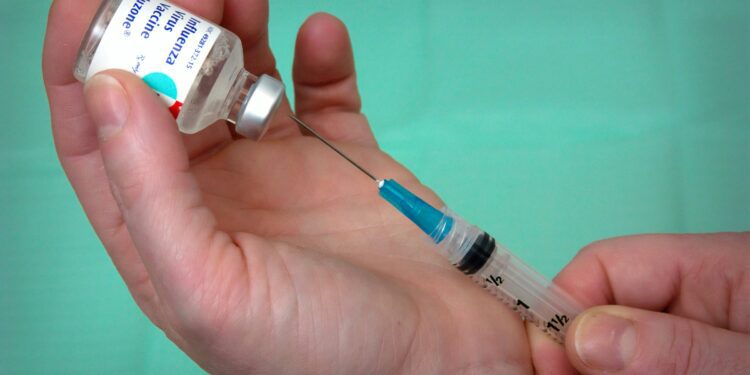Epidemiology by the Season
Public health, long characterized by its slow-moving cycles of surveillance and response, has become an increasingly real-time discipline. In recent weeks, updates from the American Medical Association (AMA) and Centers for Disease Control and Prevention (CDC) have brought renewed attention to three converging trends: a summer-resilient COVID subvariant, the national rollout of respiratory syncytial virus (RSV) vaccines for infants, and newly issued clinical guidance on gonorrhea treatment in response to antimicrobial resistance.
This convergence—across viruses, age groups, and policy domains—reveals the increasingly layered demands facing healthcare professionals and institutions. It also exposes the persistence of seasonal variability in infectious disease behavior, even as climate, global travel, and evolving immunity reshape those patterns.
COVID’s Summer Reintroduction: A Variant Without a Name
Despite three years of global surveillance and nomenclature mapping, the latest COVID subvariant spreading across parts of the southern United States and urban centers has not yet received a formal WHO Greek letter designation. Informally tracked as KP.3, this lineage descends from the Omicron BA.2 family and exhibits mutations associated with increased transmissibility but mild disease severity in vaccinated individuals.
According to genomic data shared by CDC’s COVID Data Tracker (CDC Tracker), KP.3 has climbed from 8% to nearly 26% of sequenced cases nationwide in under six weeks, particularly in Texas, Florida, and Georgia. While hospitalization rates remain stable, outpatient testing and symptomatic positivity rates are climbing, particularly among children under five and older adults with chronic comorbidities.
Virologists at Yale School of Public Health report that KP.3’s spike protein alterations may reduce neutralizing antibody effectiveness from prior bivalent boosters. However, T-cell mediated immunity remains largely intact, suggesting that existing vaccines still provide substantial protection against severe illness.
The real concern is seasonal complacency. With public masking rare, booster uptake lagging below 20% for the most recent cycle, and many Americans traveling or gathering indoors in air-conditioned environments, the virus has once again found opportunity in human behavior rather than virological surprise.
RSV Vaccination: A Long-Awaited Pediatric Advance
On a more hopeful note, the CDC’s Advisory Committee on Immunization Practices (ACIP) formally endorsed the widespread rollout of nirsevimab, a long-acting monoclonal antibody vaccine for infants under 8 months of age, earlier this year. The recommendation, issued in early spring, is now being implemented across pediatric practices ahead of RSV’s typical fall surge.
Unlike traditional multi-dose vaccines, nirsevimab is a single intramuscular injection that confers passive immunity throughout the first RSV season, reducing hospitalization by nearly 80%, according to pivotal trials published in The New England Journal of Medicine (NEJM RSV Study). The vaccine has also shown efficacy in preterm infants and those with congenital heart or lung disease, who face elevated RSV morbidity.
Hospitals have begun coordinating administration at birth, much like hepatitis B immunization. However, clinicians report uneven rollout due to manufacturing constraints, variable state Medicaid reimbursements, and parent confusion over whether it constitutes a “vaccine” or a “treatment.” This semantic distinction, while minor in pharmacology, has influenced hesitancy in communities sensitive to new immunization protocols.
The launch of Abrysvo, a maternal RSV vaccine approved for use during pregnancy to confer neonatal protection, has further diversified clinical options but introduced challenges in care coordination. Providers must now navigate two parallel immunization routes—maternal and direct infant protection—based on timing, gestational age, and local availability.
Gonorrhea Guidelines: A Familiar Infection, Reframed
While COVID and RSV dominate seasonal headlines, a quieter shift has taken place in sexually transmitted infection (STI) management, with the CDC updating its gonorrhea treatment guidelines in response to the emergence of drug-resistant Neisseria gonorrhoeae strains.
As detailed in the CDC’s latest Sexually Transmitted Infections Treatment Guidelines, dual therapy has been officially retired. Clinicians are now advised to use ceftriaxone 500 mg IM as monotherapy, with dosing increased to 1g in patients over 150kg, and to forgo azithromycin unless chlamydial coinfection is documented.
This update reflects growing resistance to macrolides and fluoroquinolones, particularly among populations in urban STI clinics and correctional facilities. The CDC has emphasized the importance of test-of-cure protocols for pharyngeal infections and the use of molecular assays for resistance monitoring when available.
The threat of untreatable gonorrhea is no longer theoretical. In late 2023, a cluster of cases in Massachusetts demonstrated high-level resistance to ceftriaxone, prompting the temporary suspension of contact tracing in favor of mass screening campaigns (Massachusetts Department of Public Health).
For clinicians, the new guidelines underscore the need for expedited partner therapy, robust contact tracing, and enhanced patient education, particularly in adolescents and young adults with low healthcare engagement.
The Shape of a Summer in Flux
These three developments, seemingly unrelated, share common ground in what they reveal about modern public health infrastructure: its strengths, its vulnerabilities, and the persistent need for adaptable, real-time clinical governance.
COVID’s summer resurgence challenges the assumption of seasonality and exposes gaps in risk communication. The RSV vaccine rollout for infants illustrates the promise of biotechnological innovation tempered by implementation hurdles. Gonorrhea’s evolving resistance pattern is a reminder that old pathogens adapt just as quickly as new ones emerge.
For healthcare providers, summer is no longer a lull between flu seasons. It is an active phase in a year-round epidemiological calendar, requiring vigilance, cross-specialty coordination, and patient engagement strategies that align with both medical evidence and public sentiment.
Conclusion: The New Tempo of Infection
The future of infectious disease will not be governed by seasonal rhythms alone. It will be shaped by immunologic memory, sociopolitical inertia, antimicrobial development, and platform-enabled misinformation. The clinical tempo has accelerated, and with it, the need for adaptive expertise in how care is communicated, delivered, and trusted.
As the summer of 2025 unfolds, the convergence of COVID, RSV, and STI updates offers a preview of what year-round public health responsiveness must look like: interdisciplinary, preventive, and relentlessly attuned to data.
The diseases may vary. The requirement for vigilance will not.















